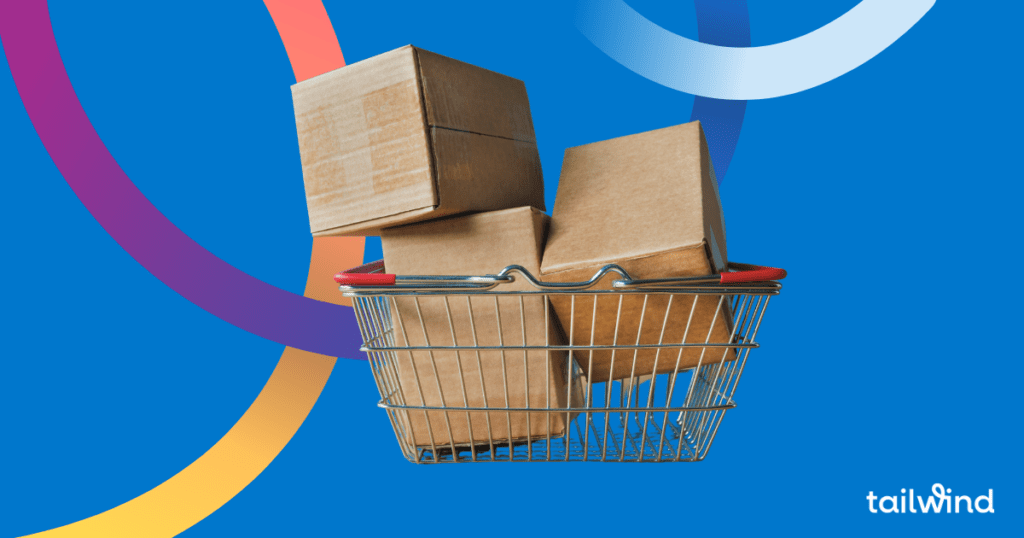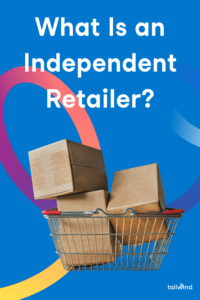
The tools and online services available online allow us to do fantastic things. Businesses, where the barrier of entry was extremely high just 10 years ago, can now be created in a matter of hours!
With dropshipping and ecommerce, independent retail is now one these “quick-to-start” businesses.
While product development still takes time, the distribution suddenly got much easier — with the whole world as your market!
Defining Independent Retailers
An independent retailer is a small business that is privately owned and operated, often by an individual or a family.
Unlike large chain stores or franchises, these retailers often have autonomous decision-making processes, personalized customer service, and a localized market presence.
When you patronize an independent retailer, you are often interacting directly with the owner or employees who have a personal stake in the business’s success.
The product selection and store policies reflect the owner’s personal touch and commitment to customer satisfaction, offering a distinctive shopping experience.
Key Characteristics of Independent Retailers:
- Ownership: Owned by individuals or families, not corporations
- Size: Typically smaller and have fewer employees compared to retail chains
- Market: Usually serve local or regional customers
- Decision Making: Owners have full control over business decisions
- Connection: Strong community ties and personalized customer relationships
It is important to recognize that the term retail business covers a wide range of operations — from clothing boutiques to hardware stores.
However, independence implies these stores do not have the backing or constraints of a larger corporate structure.
This allows for greater flexibility and often results in a unique shopping experience that fits the needs of the local community.
Operational Dynamics
As an independent retailer, you have distinctive characteristics that influence your daily operations.
Your ability to make decisions swiftly stands out. Unlike larger chains, you can react to the market and adjust your inventory based on consumer demand.
Purchasing and Suppliers:
When dealing with suppliers, you typically negotiate wholesale prices to ensure a favorable gross profit margin.
It’s crucial to establish strong relationships with your suppliers to secure competitive pricing and reliable inventory restocking.
- Wholesale pricing: Critical for cost management; directly impacts your profitability.
- Supplier relations: Can provide exclusive deals; affects the timeliness of acquiring new products.
Sales and Profitability:
Tracking which products perform well gives you insight to optimize your inventory and boost sales.
- Product performance: Focus on bestsellers to enhance turnover.
- Sales strategies: Implement promotional tactics that resonate with your customer base.
Business Owner and Decision Making:
As the business owner, your finger is on the pulse of every aspect of the operation. From staff training to marketing, each decision you make affects your business’s bottom line.
- Decision-making: Quick, informed choices can lead to better outcomes.
- Staff and operations: Direct influence allows for personalized customer service.
Challenges and Solutions
Independent retailers face distinct challenges in the marketplace, from intense competition to complex supplier dynamics and economic fluctuations. Addressing these issues requires strategic thinking and innovative solutions.
Market Competition
You’re up against formidable competitors, including corporate retailers with vast resources. Amazon and similar companies often overshadow small businesses with their lower prices and extensive reach. To differentiate your store:
- Offer unique products: Items not found on Amazon can attract a niche market.
- Enhance customer experience: Personalized service and a community feel can retain loyal customers.
Supplier Relationships
Lacking the clout of large chains, your low bargaining power means negotiating favorable terms is tough. Building robust relationships with suppliers can:
- Leverage mutual benefits: Small nimble strategies, like highlighting supplier names in-store, can create a partnership atmosphere.
- Buy collectively: Consider joining a retail group to purchase stock collectively and improve bargaining power.
Economic Pressures
Economic uncertainty affects consumer spending and business operations. Your financial resilience hinges on smart money management:
- Diversify income streams: Explore alternative services such as workshops or in-store experiences.
- Control costs: Regularly review expenses, opting for cost-effective solutions without compromising quality.
Marketing and Targeting
When you develop the marketing strategies for your independent retail business, identifying your niche is crucial.
Your target audience is a specific group of customers most likely to purchase your products. By understanding their needs, preferences, and behaviors, you can tailor your marketing efforts to resonate with them directly.
By curating content that reflects your brand identity, you can create an online persona that aligns with your buyers’ expectations and interests.
Implementing consistent and visually appealing posts will not only attract attention but also help in building a loyal customer base that identifies with your brand’s aesthetic and values.
Developing Your Brand Identity:
- Consistency is key: Ensure your visual elements and messaging align across all platforms.
- Authenticity: Be true to your brand’s values and mission.
Target Audience Engagement:
- Use social media analytics to understand the demographics and preferences of your followers.
- Engage with your audience through comments, direct messaging, and interactive content like polls or contests.
Marketing Strategies:
- Utilize email marketing to offer exclusive deals to subscribers.
- Leverage customer reviews and testimonials to build trust.
By staying current with marketing trends and understanding your audience’s evolving needs, you can refine your strategies over time to ensure you maintain a competitive edge in the retail landscape.
Maintain a clear, neutral tone in your communications, fostering confidence among your consumers that you’re a knowledgeable and reliable retailer who understands their needs.
Leveraging Technology
As an independent retailer, you have the opportunity to make strategic use of technology to enhance your business operations and customer engagement.
With the ever-evolving digital landscape, adopting technology is paramount to staying competitive and relevant.
AI and Personalization: By integrating AI into your online platforms, you can offer personalized shopping experiences to your customers.
This technology helps analyze purchasing habits and preferences, enabling you to tailor product recommendations and marketing efforts.
| Uses of AI | Benefits |
| Customized suggestions | Increases sales through targeted offers |
| Chatbots for service | Provides 24/7 customer service |
| Inventory management | Optimizes stock levels and reduces waste |
Digital Presence: Ensure your business has a robust digital footprint with a mobile-responsive website and an ecommerce platform. This broadens your customer base beyond geographical limitations, allowing you to reach a wider audience and operate 24/7.
Social Media Engagement: Social media platforms offer a direct line to your customer base. Engage with your audience through regular posts, respond to comments, and run targeted ads to drive traffic to your digital storefront.
- Effective Social Media Tactics:
- Behind-the-scenes content
- User-generated content
- Exclusive offers and promotions
Financial Aspects
When you run an independent retail business, retail prices are a critical factor. They are determined by adding a markup to the cost of goods sold to cover expenses and yield a profit. Your retail prices significantly influence your gross profit, which is the difference between sales and the cost of goods sold.
To calculate gross profit, the formula is straightforward:
Gross Profit = Sales – Cost of Goods Sold
When evaluating profitability, pre-tax profit is an essential metric. This is the money remaining after all operating expenses are subtracted from the gross profit. In retail math, the pre-tax profit margin is a percentage calculated by dividing the pre-tax profit by the total revenue.
Here’s how you can determine it:
Pre-Tax Profit Margin = (Pre-Tax Profit / Total Revenue) x 100
Conclusion
Nowadays you can go through thousands of suppliers and set up a store in minutes, but the market is full of such sellers.
That is why becoming an independent retailer with your own brand is so lucrative. It is one of the ways to not only start earning money but to build a valuable company and differentiate yourself from the competition!





